Install the AA Agent - Linux/MacOS
Before you begin, Armor recommends that you pre-installation information, including firewall rules. To learn more, see Armor Agent Pre-Installation.
Step 1: Locate the Armor Anywhere Agent
In the Armor Management Portal (AMP), in the left-side navigation, click Infrastructure.
Click Virtual Machines.
Hover over the plus ( + ) icon, and then click the Anywhere Agent icon.
If you don't have any agents listed, then click Add an Armor Agent.
Copy your license key. You will need this information in a later step.
Select your operating system (Linux or Windows).
Armor recommends installing the Armor Agent with all Security Services. Documentation on installing the Armor Agent only can be found below.
Step 2: Install the Armor Agent for Servers (AA)
Run the command to install the Armor Anywhere Agent with all Security Services.
sudo curl -sSL https://agent.armor.com/latest/armor_agent.sh | sudo bash /dev/stdin -l AAAA1-AAAA1-AAAA1-AAAA1-AAAA1 -r (region) -fYou must replace
AAAA1-AAAA1-AAAA1-AAAA1-AAAA1 with your specific license key
Currently, all users will leverage the region: us-west-armor
The Trend Recommendation Scan is not run upon installation, but is instead scheduled to run 10 minutes after installation and then every 7 days after that.
Step 3: Review the status of the Armor Agent for Servers
In the Armor Management Portal (AMP), in the left-side navigation, click Infrastructure.
Click Virtual Machines and click on the corresponding VM.
On the VM detail page, you can view information about the VM as well as the services installed on the server and their corresponding health.
The State column contains a green or red status to indicate if the server's agent has registered a heartbeat to Armor.
A green status indicates the server's agent has registered a heartbeat in the past hour.
A red status indicates the server's agent has not registered a heartbeat in the past hour.
The State of each Armor Service will show Pending for two-hours after installation. After two hours, the State should accurately reflect the health of the service.
To access troubleshooting documentation for each Armor Security Service, click on the name of the service in the sub-agent health table.
Installing the Armor Anywhere Agent Only
If you need to install the Armor Agent and Armor Security Services one by one, Armor recommends following the specific order outlined below to utilize the benefits of Recommendation Scans.
Recommendation Scans provide a good starting point for establishing a list of rules that you should implement for FIM and IPS. During a recommendation scan, the Armor Agent scans the operating system for installed applications, the Windows registry, open ports, and more. Recommendation Scans provide the rules and policies that will be auto applied by FIM and IPS, so auto apply features for those services must be turned on. Similarly, there is nothing for FIM and IPS to auto apply unless a Recommendation Scan is run.
If you do not want to run Recommendation Scans, please review the full list of CLI commands available here.
Agent Only Step 1: Run the command to install the Armor Anywhere agent only.
sudo curl -sSL https://agent.armor.com/latest/armor_agent.sh | sudo bash /dev/stdin -l AAAA1-AAAA1-AAAA1-AAAA1-AAAA1 -r (region)You must replace
AAAA1-AAAA1-AAAA1-AAAA1-AAAA1 with your specific license key
Currently, all users will leverage the region: us-west-armor
Agent Only Step 2: Install Armor Security Services
Step 1: Install Trend Sub-Agent:
/opt/armor/armor trend installStep 2: Turn On File Integrity Monitoring in "Auto-Apply" Mode (This automatically applies FIM rules identified by Recommendation Scans. You must run a Recommendation Scan to identify the FIM rules that will be auto-applied.)
/opt/armor/armor fim on auto-apply-recommendations=onStep 3: Turn On Intrusion Prevention Service in "Auto-Apply" Mode (This automatically applies IPS rules identified by Recommendation Scans. You must run a Recommendation Scan to identify the IPS rules that will be auto-applied.)
Option 1: Detect Mode
/opt/armor/armor ips detect auto-apply-recommendations=onOption 2: Prevent Mode
/opt/armor/armor ips prevent auto-apply-recommendations=on
Step 4: Install Malware Protection (Anti-Virus)
/opt/armor/armor av onStep 5: Install Vulnerability Scanning*
/opt/armor/armor vuln install*Vulnerability Scaning is a standalone service not included in the Trend Subagent
Step 6: Install Logging*
/opt/armor/armor logging install*Logging is a standalone service not included in the Trend Subagent
Step 7: Run a Recommendation Scan (This runs the initial Recommendation Scan to apply the baseline rules for FIM and IPS. Recommendations cannot be applied unless FIM and IPS are turned on and running in auto-apply mode.)
/opt/armor/armor trend recommendation-scan
Step 8: Turn On Ongoing Recommendation Scans (This automatically runs Recommendation Scans every 7 days. All FIM and IPS rule changes are automatically applied if you followed Steps 2 and 3.)
/opt/armor/armor trend ongoing-recommendation-scan onAgent Only Step 3: Same as Step 3 in the full installation outline above.
Troubleshooting
The Armor Agent uses the BiosUUID to identify the hardware that the agent is running on. This number is tied to your motherboard (in the case of a physical computer) but is also present in a Virtual Machine.
In rare cases, the usual calls to retrieve this identifier fail to return this UUID, which will cause the Armor Agent to fail registration.
Turn on Armor Agent debug logging and try to register again. If the registration fails again, search the log for "Unable to get BiosUUID"
time="2020-07-24T03:06:48-05:00" level=debug msg="Unable to get BiosUUID"
time="2020-07-24T03:06:50-05:00" level=debug msg="Unable to get BiosUUID"In Linux, try this command to try to retrieve the UUID:
sudo dmidecode |grep UUIDAny of the above commands should return a 35byte string formatted like:
4C4C7544-0057-4C30-8046-C2C04F4C9132The BIOS UUID is required by the Armor Agent, to ensure uniqueness of the device. The BIOS UUID must be readable by the operating system. If the BIOS UUID is not available to the operating system please check with your provider.
